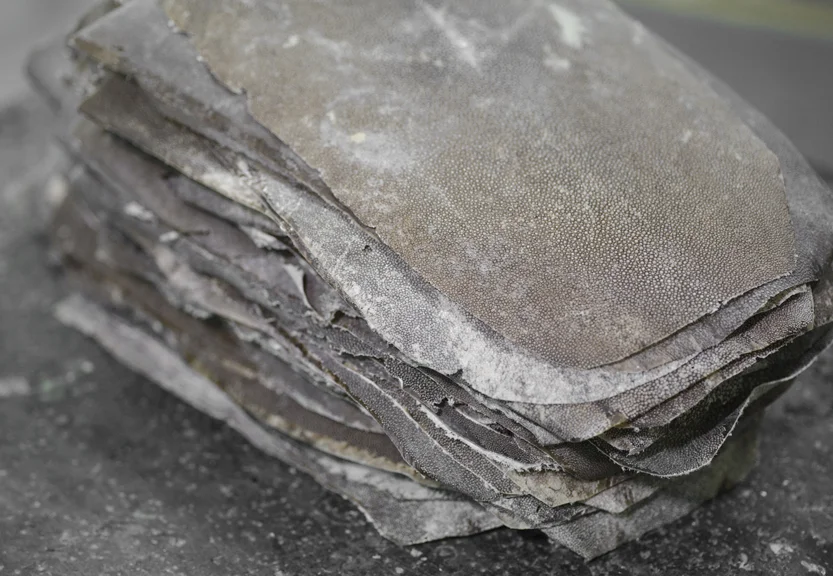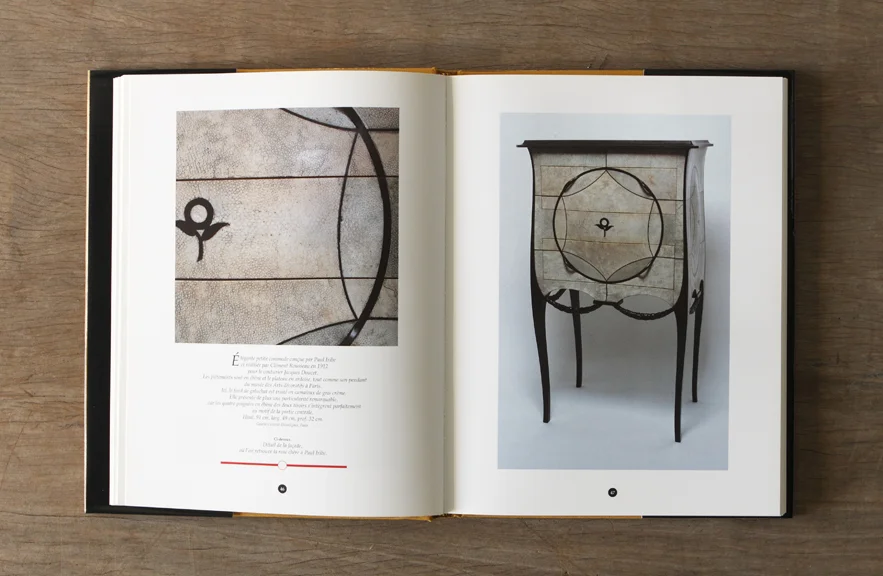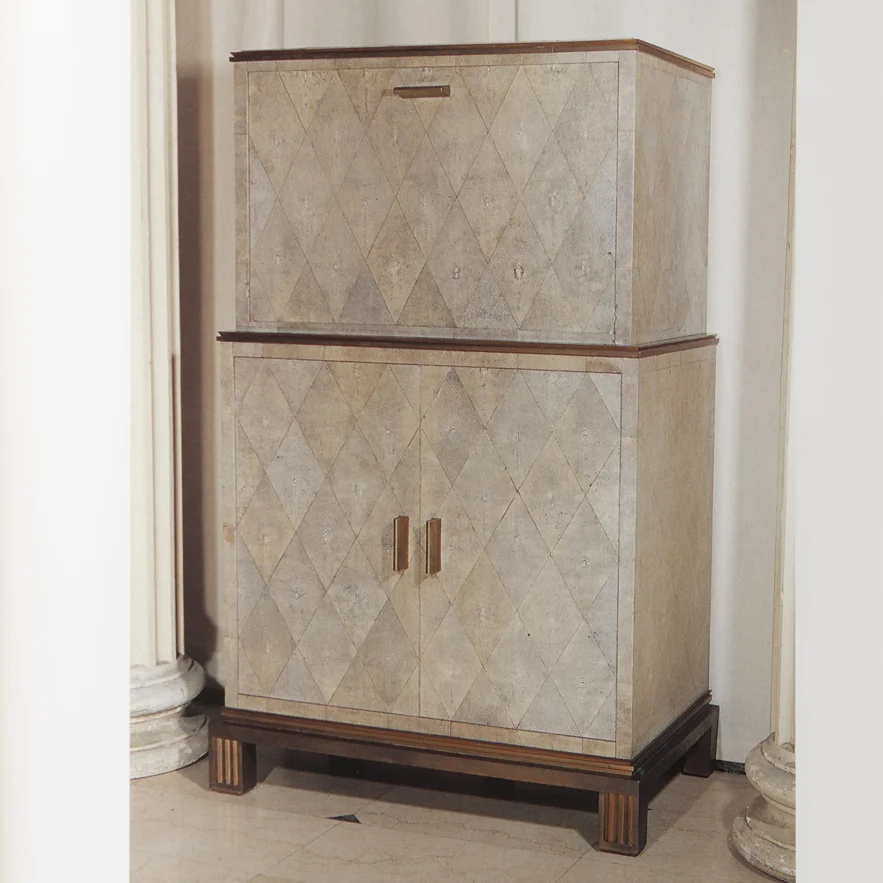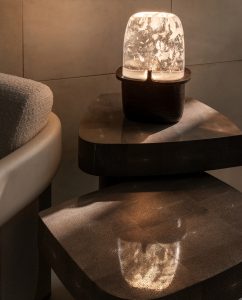Galuchat is the French word for Shagreen. Shagreen/galuchat is the name used only for those things that have been covered with raw stingray or shark skins. The ubiquitous faux and tanned stingray skins are not shagreen even though they call themselves that. This most exotic and mysterious material was what led me to open my first workshop in Thailand and so it was galuchat that began me on the course of mastering and creating things in rare and unusual materials. Simply put, shagreen is made from thousands of pure enamel beads – the same as ivory in structure and the enamel of your teeth! – that are suspended in natural collagen. This material is extremely strong and beautiful and it becomes increasingly translucent and beautiful as it ages.
There was no-one else using raw shagreen skins in Thailand in 1999 and my journey to find out about the material began with “the word”.

Raw shagreen skins after sanding
There were only two books on the subject of shagreen in 1999. Until today no other books have been written and the original books are out-of-print and can be difficult to find. They are by the same author and both were written only in French. “Galuchat” is a large format hardback book that shows a wide range of images of the things made using shagreen. “Le Galuchat – un matériau mystérieux, une technique oubliéé” (Shagreen, a mysterious material, a forgotten technique) is the only book dedicated to the difficult techniques used in working and colouring the skins.
I bought these books and patiently translated them into English. But more questions came up than were answered and I went in search of the author. Jean Perfettini is one of the principal restorers of Art Deco furniture in the world. He is called upon to restore many of the major pieces in the Musee des arts decoratifs; the beautiful museum that is part of the Louvre complex.



A collection of objects made with galuchat circa 18th and 19th century. Image from Galuchat by Lison de Caunes and Jean Perfettini.
One summer day in 2000, on a lovely romantic holiday in Paris, with my now-wife, then-girlfriend, I walked into this shuttered museum. It had been under renovation for many years and with some trepidation I asked a lonely concierge if he could help with my quest to discover something about shagreen. To my eternal gratitude, he simply wrote down the telephone number for Jean. I called and that same day we sat drinking wine together in his atelier in Montreuil, surrounded by various important pieces of furniture, painting and tapestry (Jeans wife is a famed restorer of paintings), discussing galuchat.

Jean Perfettini, shagreen master craftsman in Bangkok circa 2001.
Jean has become a good friend over the years. He combines an artist’s pursuit of aesthetic perfection with a scientists search for knowledge and understanding. We continue to meet and discuss the elusive nature of shagreen. He has worked on the most important furniture pieces of the Art Deco era where rare materials were used : nacre, ivory, parchment, gypse, straw marquetry… but his most treasured material remains the natural enamel-encrusted hides of the stingray.
For me this relationship has been as treasured as the techniques he first revealed. He opened up a world of history and references of the great collections, museums and pieces themselves. He took me inside the material and its history and gave me a profound sense that my own work continues a lineage of craft and relationships that goes back to the workshops of Japan in the 17th century, England in the 18th and 19th century and Paris in the early 20th century.

Commode made by Clément Rousseau in 1912. Image from “Galuchat.”

Low table by Jean-Michel Frank made from ebony and patchwork shagreen. Image from “Galuchat.”

Natural Speckle shagreen and bronze detailed bar by Marc du Plantier, 1938. Image from “Galuchat.”
Working with and understanding the meticulous details of this craft is constantly fascinating. Bringing contemporary designs forward and using shagreen in combination with other beautiful materials reminds me that the workshops I have built are unlike anywhere else that has gone before and almost certainly that will follow. Shagreen is now one small part of the palette of materials we work with but one that set the course in finding an artistic and qualitative standard by which our designs are known. Jean Perfettini was a friend and mentor when I was much younger and his work and Atelier Crabe mirror my own in different but complimentary ways. Aside from the satisfaction that comes from making things with shagreen, an equal part of the experience has been the good friends and adventure that has accompanied the journey.

The Angle Coffee Table highlights a field of natural chocolate brown shagreen.

Our Amaranth table with gilded shagreen top – one of many Alexander Lamont shagreen techniques that you won’t find in any books.

Skins that were dyed in a yellow celadon tone on our Peking Box.




